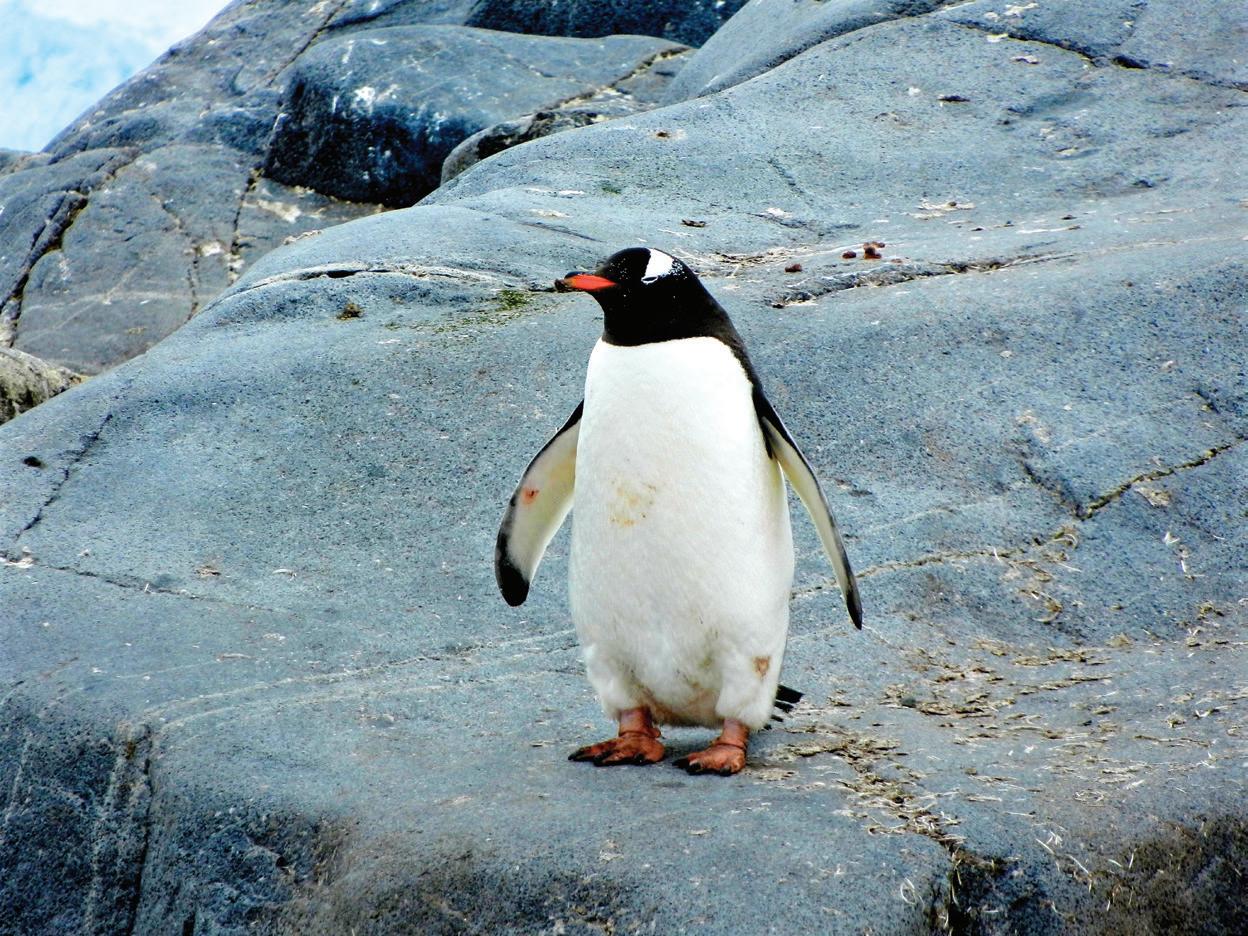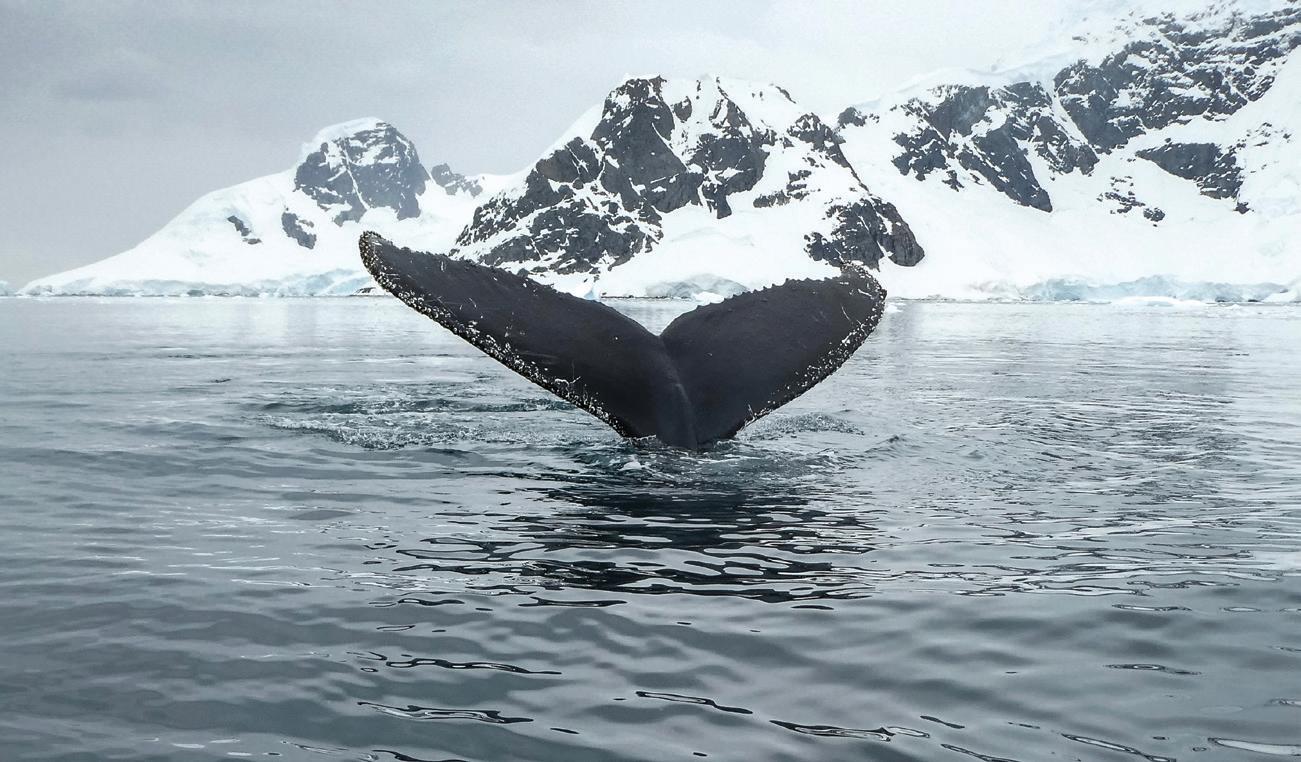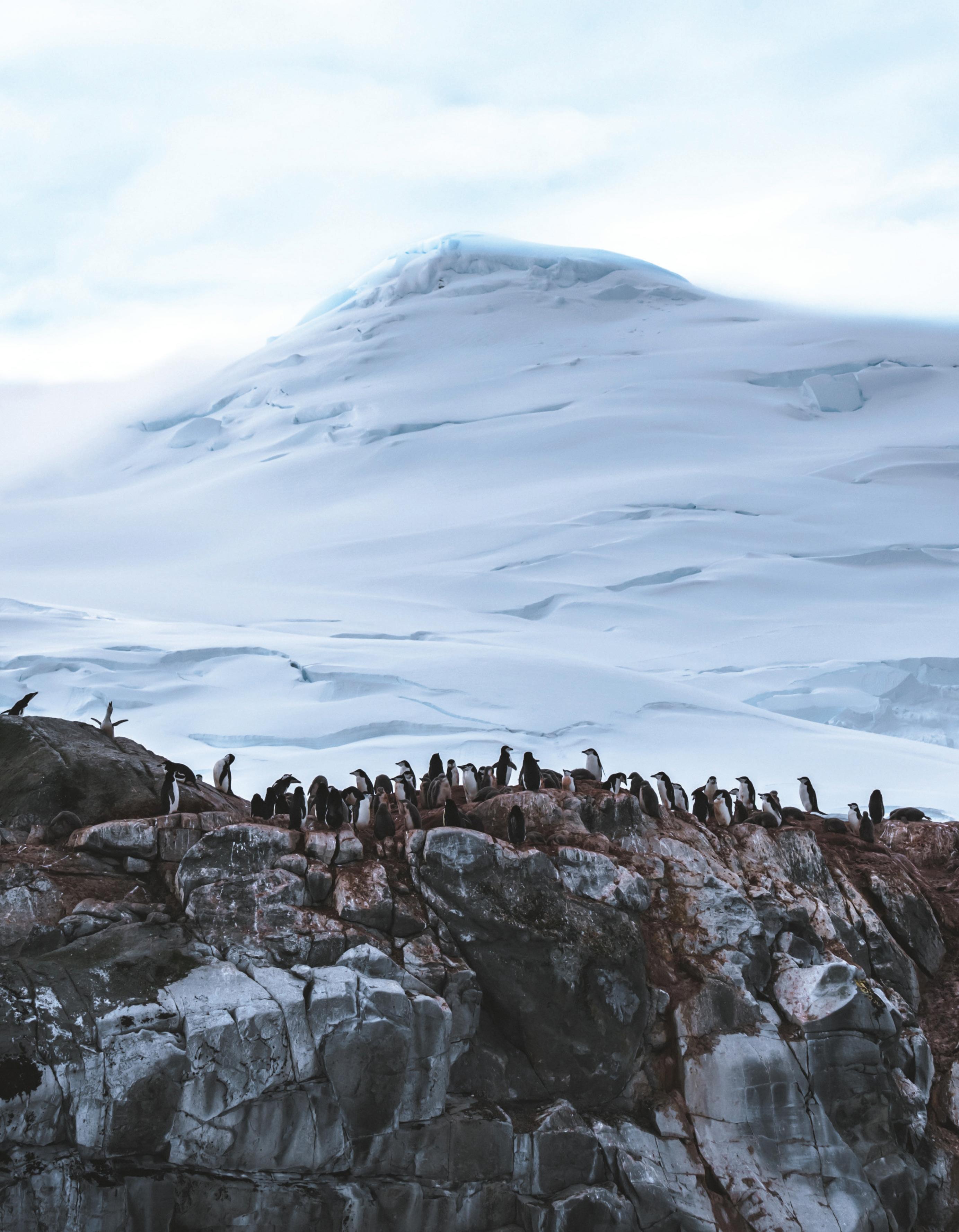
10 minute read
TRAIL BLAZER
Herm Hoops took the river less paddled and found his purpose BY JARED BLACKLEY RIVER WHISPERER
Dressed to the nines: River guide Herm Hoops and wife, Val, celebrate their anniversary on the river in 1993
Advertisement
COURTESY OF HERM HOOPS
If you ever met Herm Hoops on the river, you’d remember. He was the river guide wearing a baseball cap with an oversize toucan beak on it. His expansive smile, irreverent wit and crass sense of humor are fixtures on the rivers of the Colorado Plateau for more than four decades.
Whether working as a park ranger at Dinosaur National Monument, floating the river as a guide, repairing rafts at his home or shuttling boats and guests to and from the river, he’s by nature gregarious with travelers and locals, sharing his experiences and alerting people to threats facing the rivers he loves. Hoops began advocating for rivers after his first trip to Echo Park in Dinosaur National Monument in the early 1970s. The remote site where the Yampa and Green rivers converge was once a refuge and hideout for Butch Cassidy and his outlaw gang. But the fact that the river was almost dammed and the area submerged under a reservoir affected Hoops. He began a push to make the 83-mile section of river below Echo Park a national monument.
This section, known as Desolation Canyon, meanders through one of the most isolated and rugged regions in the country. It’s the largest area in the contiguous 48 states with no road running through it. What we now call the Green River has been carving its way through this area for 10 to 15 million years. From the river, cliffs rise up on either side like giant sandstone layer cakes—a layer of shale then cliff, shale then more cliff. Every bend offers something new, from rapids to ruins, petroglyphs to wildlife. The deepest part of the canyon is cut more than a mile below the top of the Tavaputs Plateau—nearly as deep as the deepest section of the Grand Canyon.
To Hoops, this stretch of river has always felt like home. He began running it several times a year and estimates he’s run it more than 100 times over his life.
Though the petition to turn Desolation Canyon into a national monument went nowhere, Hoops’ advocacy of rivers had begun. On the local and national front, he continued to advocate for the fragile desert river systems of the Colorado Plateau where he met with both success and failure. He spearheaded a campaign to create a boat passageway and fish ladders at the Tusher Dam diversion near the town of Green River. Now, for the first time in more than a century, it’s possible to completely navigate the river from the base of Flaming Gorge Dam to its confluence with the Colorado River.
But, he says, he also “spent months pissing into the wind” attempting to get various interest groups along the White River to agree that oil pumps should be removed—not replaced—when they wear out. His advocacy on behalf of Utah’s rivers helped turn Desolation Canyon into the largest wilderness study area in the state. And in 2018, Congress designated the lower 60 miles of the canyon as a Wild and Scenic River, protecting it, in many ways, for future generations.
Now in his 70s, Hoops’ river days sadly are behind him. Because of health issues, he took his final trip
Herm Hoops, wearing his famous toucan cap, runs the whitewater of the Colorado River
down Desolation Canyon in October 2018, just a few weeks after being inducted into the John Wesley Powell River Museum Hall of Fame (there’s even a short film about that journey on YouTube titled The Salad Days). A few years prior, he’d been diagnosed with COPD and placed on oxygen, A short while later, he learned he had an aggressive form of prostate cancer. Amid these life-changing diagnoses, he also had a hip replacement. All the while, he was working on an extensive archive on the history of inflatable boats, a project he completed in 2018 and turned over to the University of Utah’s Special Collections in the J. Willard Marriott Library.
He fights back tears when he talks about the river and his most memorable trips, most of which were done alone or with just a few others. Earlier in their marriage, his wife, Valerie, and he would celebrate their anniversary on the river. At camp, he’d dress up in a Sergeant Pepper-like band-leader uniform while she donned a cocktail dress and a parasol. They’d enjoy wine and cheese and then serve shrimp or scallops.
“We were madly in love,” he says. “We still are. She’s a very important part of my life.”
Most of his solo trips down Desolation Canyon took place in the off-season, just after the river ice melted or before it froze. “I really preferred solo trips because there was only one asshole I had to deal with,” he jokes. “I didn’t have to talk if I didn’t want
to. I didn’t have to socialize. I could write or just stare at the river or the canyon walls. One of the most beautiful things about a river is that it doesn’t care about us. It doesn’t care about our economics or our dams or our need for water. A river just does what a river does.”
He reminisces about river otters floating alongside his raft for nearly a mile and the time he watched a herd of elk cross the river. Then he recalls watching a mountain lion come down to the bank for a drink. “He had no idea I was there, man,” Hoops says, noting such wildlife encounters seldom occur on group trips. “At night,” he continues, “I lie in bed and imagine I’m on the river. I imagine I’m lying on a sandbank. I see the river in my mind. I think about the weather on certain trips. But I can’t hear [the river]. I can’t smell it. I can’t feel it.”
That’s the hardest part, he says. “I really miss the river, and memories only go so far.”
The river regularly surprised him with almost ethereal experiences. “When the moonlight comes down a canyon wall,” he says, “it can be just like sunrise.”
And just before dusk, as the canyon walls darken, the buttes and mesas high above reflect the last rays of the sun so brightly that the rocks appear to be radiating light. Within a few minutes, the rocks darken, and the stars appear, vast and incalculable. And the river, of course, does what a river does. It flows on.
FROZEN SERENITY Iceberg passageways reveal penguins, whales and aweinspiring sunsets BY CHRIS VANOCUR
It doesn’t get much better than being able to vamoose around Utah. The past few years have seen me vamoose from the Scenic Byway 12 in the south to the Golden Spike up north as well as many stops in-between. But sometimes popular Utah recreation spots such as the Mighty Five national parks can feel overcrowded and touristy, which is why I recently strayed (very) far from the beaten path.
My quest for someplace truly remote and unique took me south. Way south. As a matter of fact, about as far south as you can go.
Considering I really hate being cold, Antarctica might seem an unlikely destination. But the quiet, serenity and mysterious appeal of this frozen land called to me. I felt an inexplicable yet powerful urge to see icebergs, penguins, whales and, most importantly, as few people as possible. Sometimes, the best part of a trip is what’s not there.
Now, there are several ways to see Antarctica. If you want to actually step foot on the continent, then a small expedition ship is the way to go. They leave from Ushuaia, a chill little city at the very southern tip of Argentina. Upon arriving in Antarctica, you are then ferried to the shores in Kodiak boats. But be forewarned, these small Antarctica excursions can be pricey.
Another option is to travel aboard a larger cruise ship from either Buenos Aires, Argentina, or Santiago, Chile. On their journeys around the southern tip of South America, they spend several days doing a “driveby” of Antarctica. While this type of trip can be more affordable, setting foot on Antarctica is not necessarily included in the base price.
I chose the cruise-ship option. Walking on Antarctica just wasn’t that big of a deal to me. Also, cruising around Cape Horn enabled me to see the breathtaking majesty of both Patagonia and the Chilean fjords.

JAY RUZESKY



DEREK OYEN
Whichever way you go, and regardless of the expense and difficulty in reaching Antarctica, you will be rewarded with the sight of something truly miraculous. Words cannot adequately describe the astonishing beauty of this place. But the one word that kept coming back to me was “otherworldly.” The tranquility of the blue iceberg bays and the haunt- ing mist of the snowcapped mountains floored me. On my second day there, I snapped more than 300 pictures. Just when you think nothing can be more spectacular than what you’ve just seen, you see something even more jaw-dropping.
On one of my last nights in Antarctica, just as I was getting ready for bed about 10:30 p.m., I hap- pened to glance out my cabin window and was greet- ed by the sight of the sun setting over some Antarc- tic peaks. I grabbed my coat and camera and ran up to the starboard deck. Luckily, I was able to grab a dozen or so photos of this once-in-a-lifetime sight. Antarctica had surprised and stunned me one final time.
However, there is one more thing I should proba- bly mention about sailing to Antarctica. To get there, you have to cross the Drake Passage. It’s the body of water between Ushuaia and Antarctica. It’s also where the Atlantic and the Pacific oceans collide in a violent and watery tussle. Because of this, the Drake Passage is often called the roughest stretch of water in the world.
The sea was relatively calm as our ship made its way south to Antarctica. When conditions are like this, it’s called the “Drake Lake.” But on the way back, we were racing to get ahead of approaching storms. This caused the wind and the waves to misbehave. When this kind of turbulence occurs, it’s called “The Drake Shake.” Without trying to scare anyone, the unpredictability of the Drake Passage (and Antarc- tica weather in general) is something to think about before embarking on this trip.
But, for me, it’s an inconvenience worth taking. After all, who knows what Antarctica will look like in the future. Even this frozen tundra is not im- mune to climate change. Some fellow shipmates told me they had been to Antarctica just a decade or so before and remembered seeing significantly more ice. Anecdotal sure, but telling nonetheless.
Less ice also means it’s now easier for ships to get to Antarctica. In fact, as I write this, more boats are being built specifically with Antarctic cruising in mind. During the 2019-20 tourist season alone, more than 75,000 people were expected to visit this area during its “summer months” (roughly October through March). I strongly suspect and fear this number will soon increase exponentially.
So, if you’re thinking about vamoosing to this very cold place, you might want to go before it gets too hot. Both in terms of temperature and number of tourists.

Mon- Sat 8-6:45 | Sunday 10-5 9275 S 1300 W 801-562-5496 glovernursery.com









